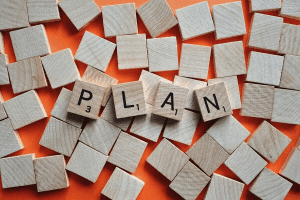Introduction: Make Your Meetings More Productive
Meetings can be the cornerstone of effective teamwork, but all too often, they can become time-consuming affairs that leave participants feeling drained rather than inspired. To ensure your meetings are a valuable use of everyone’s time, follow these six essential tips for making them more productive and engaging.
1. Define Clear Objectives:
- Why it matters: Without a clear purpose, meetings can become unproductive and time-wasting. Defining objectives ensures that everyone understands what the meeting aims to achieve.
- How to do it: Before scheduling a meeting, ask yourself and your team, “What’s the specific goal or purpose of this meeting?” If you can’t pinpoint a clear objective, reconsider whether the meeting is necessary. If it is, outline the objectives and communicate them to all participants. This clarity sets the stage for a focused discussion.

Image by https://www.makeuseof.com/
2. Involve Every Team Member:
- Why it matters: Effective teamwork thrives on diverse perspectives and contributions from all team members. Involving everyone ensures a broader range of ideas and solutions.
- How to do it: Encourage participation by sharing the meeting agenda in advance. At the start of the meeting, establish a ‘no interruption’ policy, allowing each team member to express their thoughts without interruptions. This creates an inclusive environment where everyone’s input is valued and heard.

Image by https://www.makeuseof.com/
3. Distinguish Fact From Opinion:
- Why it matters: Making informed decisions is crucial for the success of any project. Separating facts from opinions ensures that decisions are based on reliable information.
- How to do it: During discussions, clearly identify facts and data that support various points. Writing these facts on a whiteboard or shared document can help anchor the discussion and prevent it from veering off course. Encourage team members to substantiate their arguments with concrete evidence.
4. Keep the Meeting Engaging:
- Why it matters: Engaging meetings are more productive and enjoyable for participants. They foster active participation and better retention of information.
- How to do it: Use various engagement strategies such as having a single presenter to maintain focus, introducing small rewards or recognition for good ideas or contributions, incorporating interactive activities like brainstorming or problem-solving exercises, and facilitating group discussions. These methods keep team members involved and attentive throughout the meeting.

Image by https://www.makeuseof.com/
5. Make Decisions and Assign Tasks:
- Why it matters: Many meetings are held to make decisions and plan actions. Clear decision-making and task assignment ensure that progress is made.
- How to do it: When decisions are reached, ensure they are well-defined and not vague. Avoid revisiting the same points repeatedly. If additional information is required to make a decision, assign someone to gather it and present it at the next meeting. To drive project success, assign tasks to individuals or groups, specify deadlines, and clarify responsibilities. This promotes accountability and keeps everyone on the same page.
6. Foster Team Unity:
- Why it matters: Strong team relationships are essential for collaboration and morale. A harmonious team is more likely to work well together and achieve its goals.
- How to do it: Be attentive to team dynamics, especially if there are conflicting groups within the team. Consider incorporating team-building activities or games into your meetings to promote cohesion and improve relationships. These activities break the ice, create a positive atmosphere, and enhance collaboration among team members.

Image by https://www.makeuseof.com/
| Tip | Description |
|---|---|
| Define Clear Objectives | Start with a clear understanding of the meeting’s purpose. |
| Involve Every Team Member | Encourage participation from all team members, irrespective of team size. |
| Distinguish Fact From Opinion | Base decisions on concrete data and differentiate facts from opinions. |
| Keep the Meeting Engaging | Use various engaging formats, rewards, activities, and group discussions. |
| Make Decisions and Assign Tasks | Ensure decisions are clear and actionable, and assign tasks with deadlines. |
| Foster Team Unity | Promote team cohesion through fun games and activities to improve relationships. |
Conclusion
By implementing these six strategies, you can transform your meetings into productive and enjoyable gatherings where ideas flow, decisions are made, and projects move forward efficiently. Remember that there are various apps and tools, such as Microsoft Teams, Jitsi Meet, and Taskade, that can simplify online meeting setup and enhance your team’s collaboration experience.












